Hot summer days call for cool refreshments, but do you know how to keep your snacks and drinks icy cold?
We’ll uncover the ideal temperature for your refrigerator during the sizzling summer months. Are you ready to chill out with me?
Together, we’ll find the perfect setting to beat the heat and keep your treats frosty and delicious.
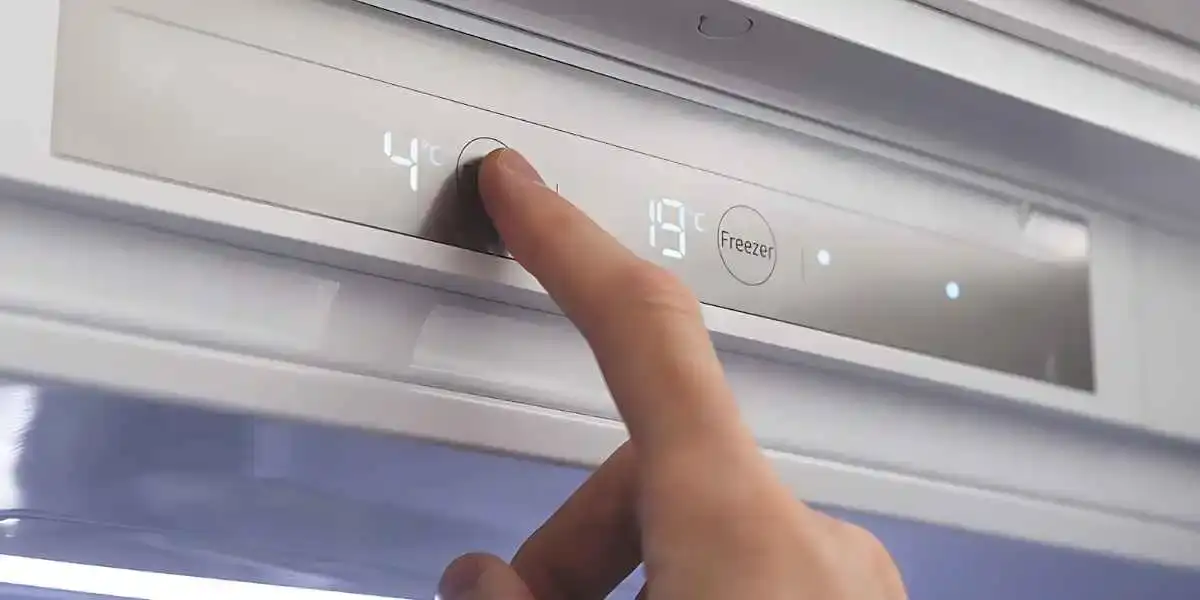
What Should Be The Temperature Of Refrigerator In Summer?
The U.S. FDA recommends keeping it at or below 40°F, but the best range is between 35° and 38°F.
Temperatures above this range can lead to food spoilage and the rapid growth of harmful bacteria. Stay safe, and keep your fridge cool.
Benefits Of Correct Refrigerator Temperature
Food safety:
The ideal refrigerator temperature is between 35°F and 38°F (2°C and 3°C). This temperature helps to slow the growth of bacteria, which can cause food poisoning.
The U.S. Food and Drug Administration (FDA) recommends that you keep your refrigerator temperature at or below 40°F (4°C).
However, the ideal temperature is actually lower, as this will help to keep your food fresher for longer.
Food quality:
Keeping your refrigerator at the correct temperature can help to preserve the quality of your food.
This is because the cold temperature helps to slow down the natural processes that cause food to spoil, such as the growth of mold and bacteria.
As a result, your food will stay fresher for longer and taste better when you eat it.
Energy efficiency:
A well-maintained refrigerator that is set to the correct temperature can be more energy efficient.
This is because the refrigerator will not have to work as hard to keep your food cold if the temperature is set correctly.
As a result, you can save money on your energy bills.
Prevention of frost and ice buildup:
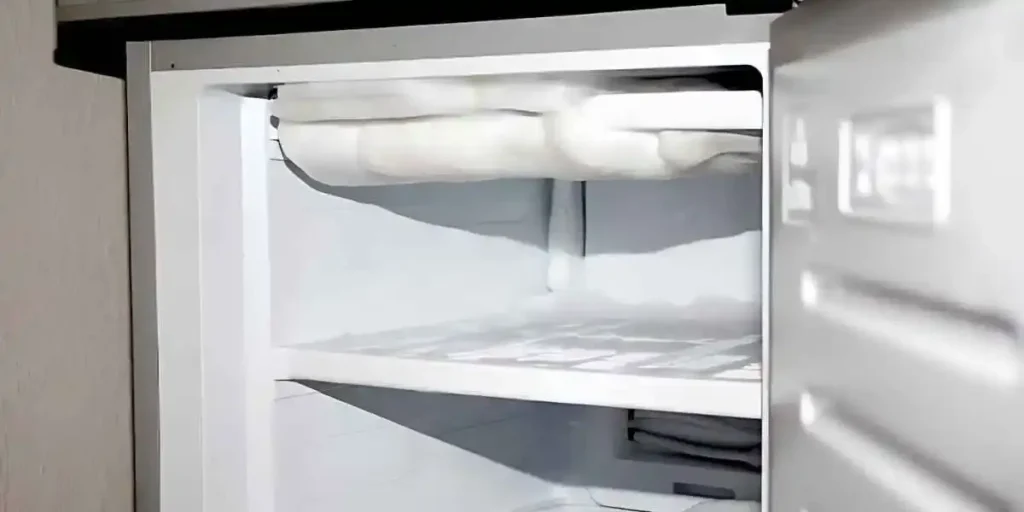
A refrigerator that is set to the correct temperature will help to prevent frost and ice buildup.
This is because the cold air will be able to circulate more freely throughout the refrigerator, preventing moisture from condensing on the walls and shelves.
As a result, your food will stay fresher, and you will not have to defrost your refrigerator as often.
Full of Nutrients
Nutrition is a big reason we eat. But did you know if your fridge is too warm or too cold, it can rob food of its nutrients? Certain vitamins in food are sensitive.
They don’t like heat or severe cold. The right refrigerator temperature keeps these nutrients safe. So, you get all the goodness when you eat.
Money-Saving Machine
Your fridge can help save money. How? It’s simple. A properly chilled fridge stops food from spoiling quickly.
So, you throw away less, and your grocery bill shrinks. No more throwing away moldy cheese or wilted lettuce.
Goodbye, Food Poisoning
Food poisoning is often from bacteria in food. A warm fridge is like a party for these bacteria. But, they hate the cold.
A well-set fridge temperature means fewer bacteria, reducing the chances of food poisoning.
Efficient and Eco-friendly
The correct temperature makes your fridge more energy efficient. This means it uses less electricity to do its job.
So, your energy bills go down. Plus, it’s good for the environment, too.
Factors Affecting Refrigerator Temperature In Summer
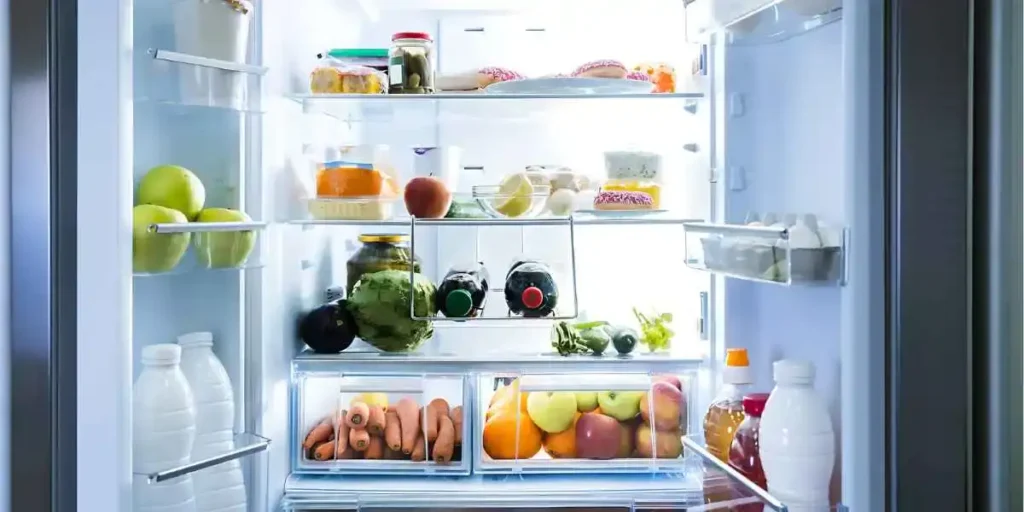
Effect of Summer Heat
In the summer, the external temperature naturally rises. This increase can have a direct impact on your fridge.
The outside heat pushes your refrigerator to work extra hard to cool down its contents. Imagine this as a race.
Your fridge constantly tries to reach the finish line, which is the ideal temperature. But the summer heat acts like an obstacle, slowing it down.
The ambient temperature:
The warmer the ambient temperature, the harder your refrigerator will have to work to keep your food cold.
This means that the temperature inside your refrigerator may be higher than you would like, especially if you live in a hot climate.
The frequency of door openings:
Every time you open your refrigerator, warm air from the outside will rush in, which can raise the temperature inside the refrigerator.
To help keep the temperature down, try to open your refrigerator as few times as possible.
The amount of food in your refrigerator:
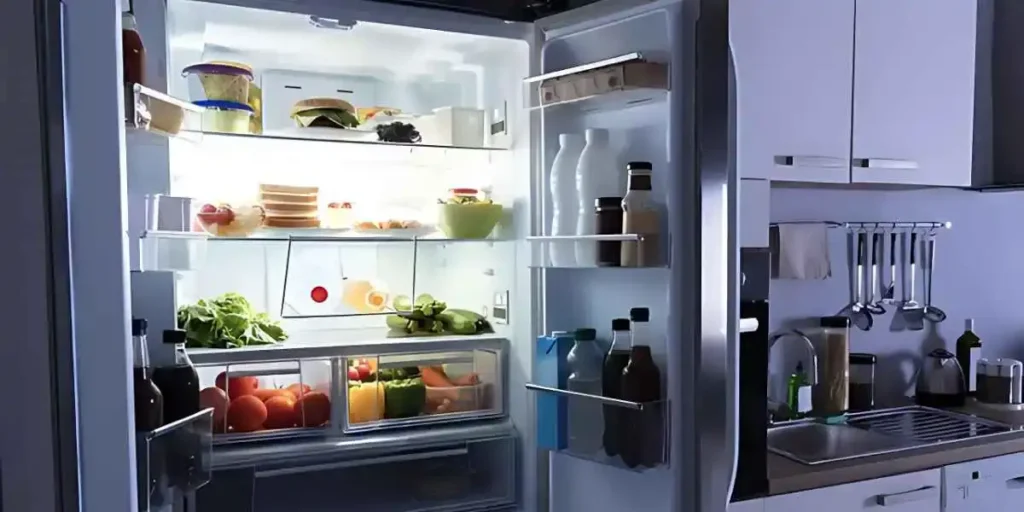
A full refrigerator will help to keep the temperature more stable than an empty one.
This is because the food will help to insulate the refrigerator and prevent the warm air from entering from the outside.
The age of your refrigerator:
Older refrigerators may not be as efficient as newer models, which means they may have to work harder to keep your food cold.
This can lead to higher temperatures inside the refrigerator, especially in hot weather.
The location of your refrigerator:
If your refrigerator is located in a sunny spot or near a heat source, such as a stove or oven, it will be more likely to overheat.
To help keep the temperature down, try to locate your refrigerator in a cool, shaded spot.
The Impact of Hot Leftovers
Storing hot food in the refrigerator is another factor. When you put warm or hot dishes in the fridge, it has to work overtime to cool them down.
This struggle increases in the summer. The fridge is already dealing with external heat. Add hot food to the mix, and it has a tough time maintaining its temperature.
Risks Of Incorrect Refrigerator Temperature In Summer: How To Avoid These Risks
Food poisoning:
If the temperature of your refrigerator is too high, it can create an environment where harmful bacteria can grow.
This can lead to food poisoning, which can cause symptoms such as nausea, vomiting, diarrhea, and fever.
Food spoilage:
If the temperature of your refrigerator is too high, it can cause food to spoil more quickly.
This can lead to food waste and can also make you sick if you eat spoiled food.
Increased energy consumption:

If the temperature of your refrigerator is too high, it will have to work harder to keep your food cold.
This can lead to increased energy consumption and higher electricity bills.
Damage to your refrigerator:
If the temperature of your refrigerator is too high, it can put stress on the compressor and other components.
This can lead to premature wear and tear on your refrigerator and may even require repairs.
5 Steps to Avoid These Risks
Step 1: Regular Temperature Checks
To avoid these risks, it is important to keep your refrigerator temperature at the correct level.
The ideal temperature for a refrigerator is between 35°F and 38°F (2°C and 3°C).
You can check the temperature of your refrigerator using a digital thermometer. If the temperature is too high, you can adjust the thermostat accordingly.
Step 2: Adjust the Temperature
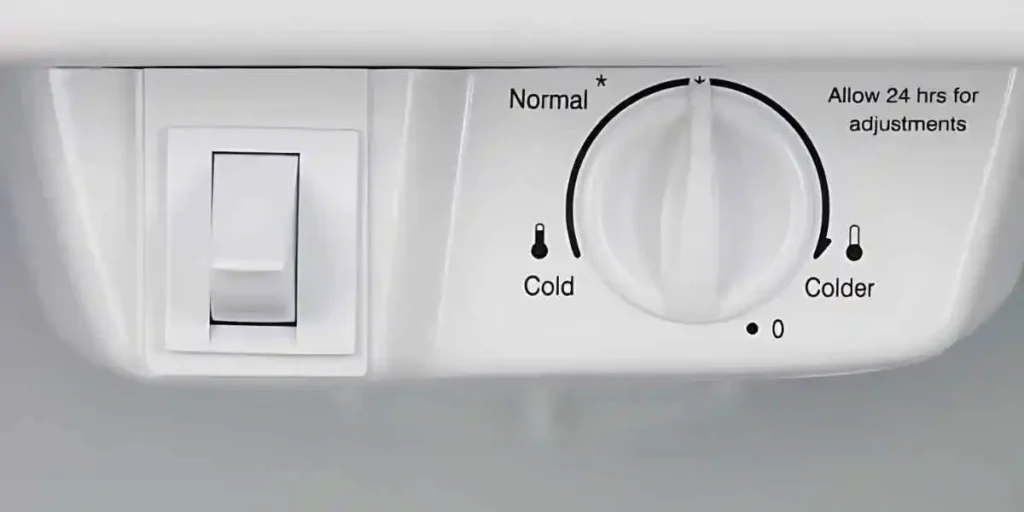
If the temperature isn’t right, adjust it. Refer to your fridge’s manual on how to do this. The instructions vary based on the model.
Step 3: Proper Food Storage
Store your food properly. Keep raw meat and fish at the bottom. Place cooked food on upper shelves. This prevents cross-contamination.
Step 4: Don’t Overload the Fridge
Avoid cramming your fridge with food. Air needs to circulate. An overloaded fridge struggles to maintain the right temperature.
Step 5: Cool Hot Food Before Storing
Let hot food cool before storing it. Hot food raises the fridge’s temperature. This can lead to food spoilage.
How To Set The Optimal Refrigerator Temperature For Summer
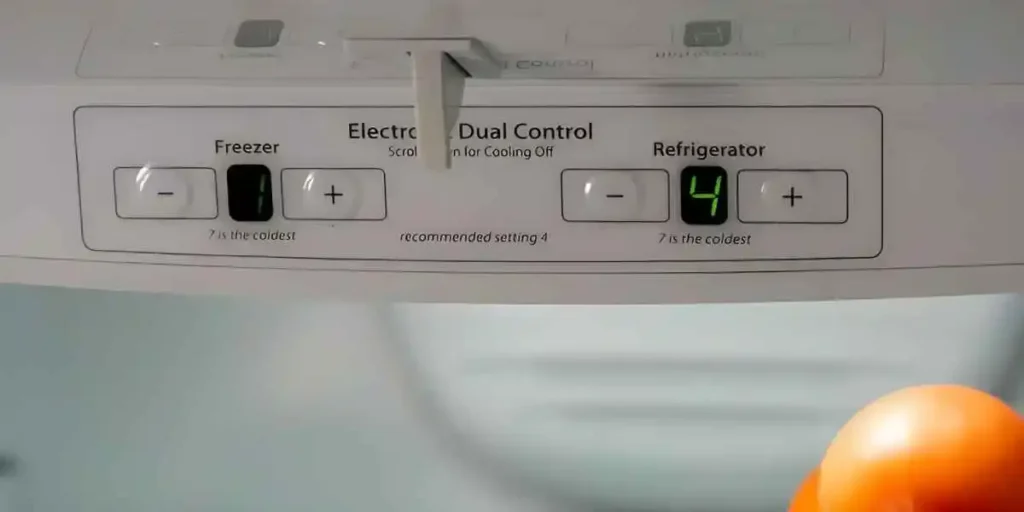
Check the temperature of your refrigerator.
The ideal temperature for a refrigerator is between 35°F and 38°F (2°C and 3°C). You can check the temperature of your refrigerator using a digital thermometer.
If the temperature is too high, you can adjust the thermostat accordingly.
Set the thermostat to a colder setting.
If you live in a hot climate, set the thermostat on your refrigerator to a colder setting. The best setting for your refrigerator will depend on the ambient temperature in your home.
Clean the condenser coils regularly.
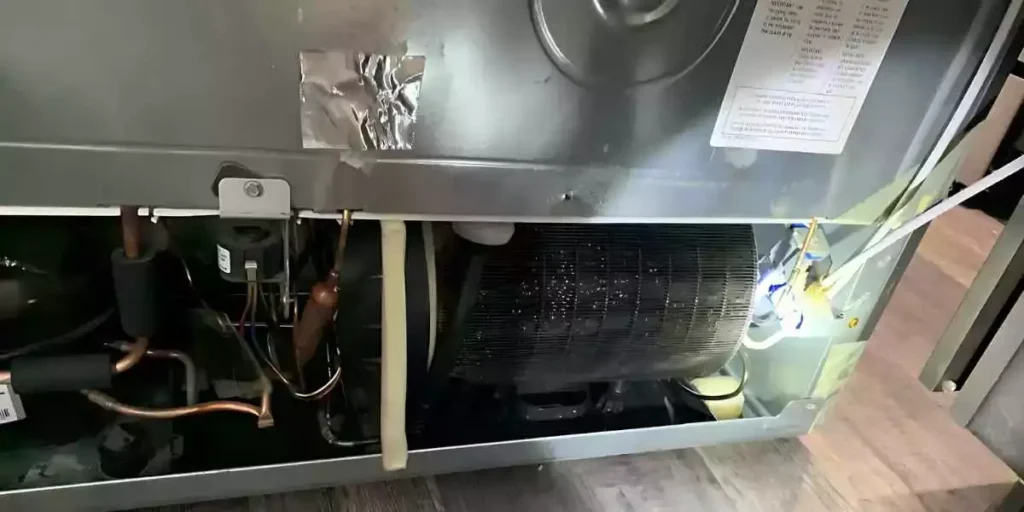
The condenser coils are located on the back or bottom of your refrigerator and help remove heat.
If they are dirty, they will not be able to work as efficiently, which can lead to higher temperatures inside the refrigerator.
Defrost your refrigerator regularly.
Frost buildup can block the airflow inside your refrigerator, which can raise the temperature.
Avoid opening your refrigerator too often.
When you open the door, warm air from the outside rushes in, raising the temperature inside the refrigerator.
To help keep the temperature down, try to open your refrigerator as few times as possible.
Store your food properly.
Certain foods, such as fruits and vegetables, should be stored in the crisper drawer designed to maintain a cooler temperature.
Consider investing in a newer refrigerator.
If your refrigerator is older, it may not be as energy efficient as newer models.
This means that you may have to work harder to keep your food cold, which can lead to higher temperatures inside the refrigerator.
Maintaining Energy Efficiency: Tips For Summer Refrigerator Temperature
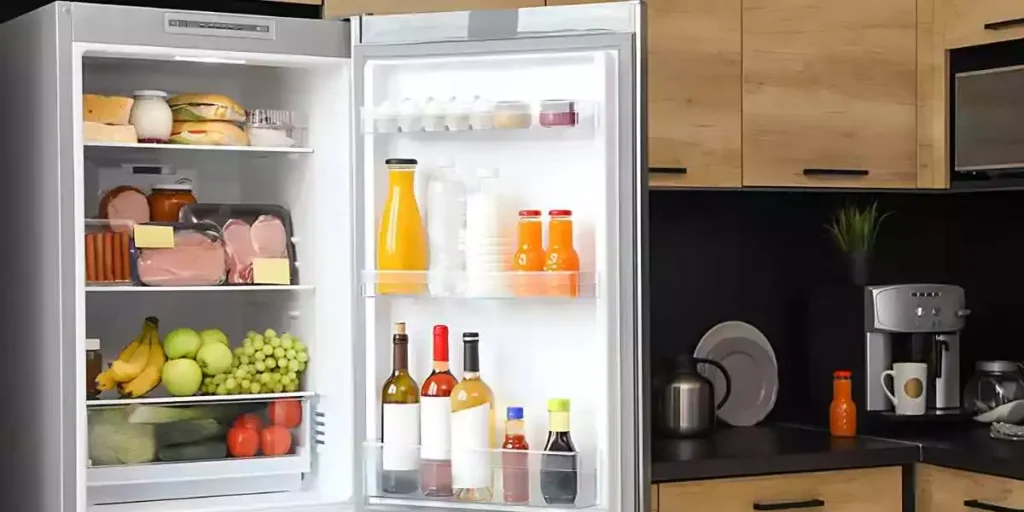
- Place your refrigerator in a cool, well-ventilated area. Avoid placing it in direct sunlight or near heat sources such as stoves or ovens.
- Keep the door closed as much as possible. When you open the door, warm air enters, and the refrigerator has to work harder to cool down.
- Don’t overfill your refrigerator. This can block airflow and make it harder for the refrigerator to maintain a consistent temperature.
- Clean the interior surfaces regularly. This will help to remove any food residue or spills that could attract bacteria and spoil food.
- Have your refrigerator serviced regularly. A qualified technician can check for any problems that could affect your refrigerator’s efficiency.
Faqs: Answering Common Questions About Refrigerator Temperature In Summer
Why Is It Important To Adjust The Refrigerator Temperature In Summer?
Adjusting the refrigerator temperature in summer is important because warmer temperatures can cause food to spoil more quickly.
By setting the temperature correctly, you can help preserve the freshness and quality of your food.
How Can I Adjust The Temperature Of My Refrigerator For Summer?
To adjust the temperature of your refrigerator, locate the temperature control dial inside.
Turn the dial to a slightly cooler setting, such as 3 or 4, to maintain the desired temperature during the warmer summer months.
Can I Set The Refrigerator Temperature Too Low In Summer?
While setting the temperature low enough to keep your food fresh is important, setting it too low can be detrimental.
Freezing can occur if the temperature is too low, so keeping it within the recommended range is best.
How Often Should I Check The Refrigerator Temperature During Summer?
It’s a good idea to check the refrigerator temperature at least once a week during summer to ensure it’s maintaining the proper range.
This can help you catch any temperature fluctuations and make adjustments if needed.
Are There Any Other Tips To Keep My Refrigerator Efficient In Summer?
Yes, there are a few tips to keep your refrigerator efficient in the summer.
Make sure the door seals properly to prevent warm air from entering, avoid overloading the refrigerator and keep it away from direct sunlight or heat sources.
What Should I Do If My Refrigerator Is Not Cooling Enough In Summer?
If your refrigerator is not cooling enough in summer, first check if the temperature setting is correct.
If it is, try cleaning the condenser coils at the back of the refrigerator and ensure proper airflow around it.
If the issue persists, contacting a professional for assistance may be best.
Conclusion
Keep your refrigerator temperature between 35°F and 38°F (2°C and 3°C) in summer to ensure food safety and freshness. Setting it too high can lead to food spoilage and bacteria growth.
Regularly check the temperature, adjust it if needed, and store food properly. Avoid overloading the fridge and limit door openings.
Clean the coils and consider a newer, more energy-efficient model. Following these tips will help you enjoy fresh, nutritious food while saving money and reducing the risk of food poisoning.
